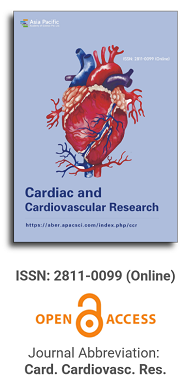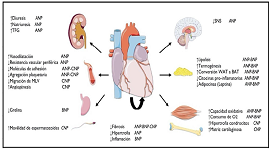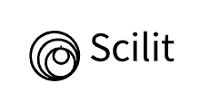
Asia Pacific Academy of Science Pte. Ltd. (APACSCI) specializes in international journal publishing. APACSCI adopts the open access publishing model and provides an important communication bridge for academic groups whose interest fields include engineering, technology, medicine, computer, mathematics, agriculture and forestry, and environment.

Myocardial perfusion stress test in women
Vol 5, Issue 2, 2024
Download PDF
Abstract
Aim: The utility of the 99mTc-sestamibi myocardial perfusion stress imaging (MPI) over stress echo test (SEHO) in women with intermediate pre-test probability scores. Methodology: Our study included 98 women with suspected ischemic heart disease and intermediate pre-test probability scores who underwent MPI and SEHO. They were followed for 26 ± 6 months. The data about MACE and possible coronary angiography were collected. Results: The SEHO test was pathological in 31% of the study population. Almost half of those patients had atypical chest pain. MPI was positive in 32% of the examined group. In the follow-up period, MACE was present in 36 patients: PCI (20), CABG (8), acute coronary syndrome (8). The results of the MPI had a high statistically significant correlation with the coronary angiography findings in the follow-up period (p < 0.001, μ = 0.878). Additionally, the SEHO test and coronary angiography results correlated well (p < 0.05, μ = 0.582). However, MPI test result and SEHO result were not significantly associated with MACE based on Cox proportional hazard analyses (p > 0.05). Conclusion: MPI may be the complementary procedure for the evaluation of heart conditions in women with intermediatepre-test probability scores, since it correlates well with coronary angiography findings.
Keywords
References
- American Heart Association. Heart disease and stroke statistics—2004 update. Dallas, TX: American Heart Association; 2003.
- Gulati M, Levy PD, Mukherjee D, et al. 2021 AHA/ACC/ASE/CHEST/SAEM/SCCT/SCMR Guideline for the Evaluation and Diagnosis of Chest Pain. Journal of the American College of Cardiology. 2021; 78(22): e187–e285. doi: 10.1016/j.jacc.2021.07.053
- Abidov A, Germano G, Hachamovitch R, et al. Gated SPECT in assessment of regional and global left ventricular function: An update. Journal of Nuclear Cardiology. 2013; 20(6): 1118–1143. doi: 10.1007/s12350-013-9792-
- Hlatky MA, Shilane D, Hachamovitch R, et al. Economic Outcomes in the Study of Myocardial Perfusion and Coronary Anatomy Imaging Roles in CoronaDdry Artery Disease Registry. Journal of the American College of Cardiology. 2014; 63(10): 1002–1008. doi: 10.1016/j.jacc.2013.11.038
- Al Badarin FJ, Spertus JA, Bateman TM, et al. Drivers of radiation dose reduction with myocardial perfusion imaging: A large health system experience. Journal of Nuclear Cardiology. 2020; 27(3): 785–794. doi: 10.1007/s12350-018-01576-w
- Grozdic Milojevic I, Tadic M, Sobic-Saranovic D, et al. Myocardial perfusion stress test: is it worth? The International Journal of Cardiovascular Imaging. 2020; 36(4): 741–748. doi: 10.1007/s10554-019-01749-9
- American Heart Association Writing Group on Myocardial Segmentation and Registration of Cardiac Imaging. Standardized myocardial segmentation and nomenclature for tomographic imaging of the heart: a statement for healthcare professionals from the Cardiac Imaging Committee of the Council on Clinical Cardiology of the American Heart Association. Circulation. 2002; 105: 539–542.
- Grossman GB. Myocardial perfusion imaging in overweight patients and women: Is it CZT good enough? Journal of Nuclear Cardiology. 2020; 27(3): 769–773. doi: 10.1007/s12350-019-01656-5
- Hochleitner M. Coronary Heart Disease: Sexual Bias in Referral for Coronary Angiogram. How Does It Work in a State-Run Health System? Journal of Women’s Health & Gender-Based Medicine. 2000; 9(1): 29–34. doi: 10.1089/152460900318920
- Mieres JH, Rosman DR, Shaw LJ. The role of myocardial perfusion imaging in special populations: Women, diabetics, and heart failure. Seminars in Nuclear Medicine. 2005; 35(1): 52–61. doi: 10.1053/j.semnuclmed.2004.09.004
- Alsamarah A, Bansari A, Nasser H, et al. Comparison of the Appropriateness of Myocardial Perfusion Imaging in Men Versus Women. The American Journal of Cardiology. 2017; 120(2): 191–195. doi: 10.1016/j.amjcard.2017.04.006
- Shaw LJ. Gender Differences in the Noninvasive Evaluation and Management of Patients with Suspected Coronary Artery Disease. Annals of Internal Medicine. 1994; 120(7): 559. doi: 10.7326/0003-4819-120-7-199404010-00005
- Douglas PS, Ginsburg GS. The Evaluation of Chest Pain in Women. New England Journal of Medicine. 1996; 334(20): 1311–1315. doi: 10.1056/nejm199605163342007
- Kwok Y, Kim C, Grady D, et al. Meta-analysis of exercise testing to detect coronary artery disease in women. Am J Cardiol. 1999; 83: 660–666.doi: 10.1016/s0002-9149(98)00963-1
- Schulman SP, Thiemann DR, Ouyang P, et al. Effects of acute hormone therapy on recurrent ischemia in postmenopausal women with unstable angina. J Am Coll Cardiol. 2002; 39: 231–237. doi: 10.1016/s0735-1097(01)01724-7
- Okin PM, Kligfield P. Gender-specific criteria and performance of the exercise electrocardiogram. Circulation. 1995; 92: 1209–1216. doi: 10.1161/01.cir.92.5.1209
- Gibbons RJ, Balady GJ, Beasley JW, et al. ACC/AHA guidelines for exercise testing: a report of the American College of Cardiology/American Heart Association Task Force on Practice Guidelines. J Am Coll Cardiol. 1997; 30: 260–311. doi: 10.1016/s0735-1097(97)00150-2
- Hendel RC, Patel MR, Allen JM, et al. Appropriate Use of Cardiovascular Technology. Journal of the American College of Cardiology. 2013; 61(12): 1305–1317. doi: 10.1016/j.jacc.2013.01.025
- Hachamovitch R, Hayes SW, Friedman JD, et al. Stress myocardial perfusion single-photon emission computed tomography is clinically effective and cost effective in risk stratification of patients with a high likelihood of coronary artery disease (CAD) but no known CAD. Journal of the American College of Cardiology. 2004; 43(2): 200–208. doi: 10.1016/j.jacc.2003.07.043
- Amanullah AM, Kiat H, Hachamovitch R, et al. Impact of myocardial perfusion single-photon emission computed tomography on referral to catheterization of the very elderly: is there evidence of gender-related referral bias? J Am Coll Cardiol. 1996; 28: 680–686. doi: 10.1016/0735-1097(96)00200-8
- Doukky R, Hayes K, Frogge N. Appropriate use criteria for SPECT myocardial perfusion imaging: Are they appropriate for women? Journal of Nuclear Cardiology. 2016; 23(4): 695–705. doi: 10.1007/s12350-015-0233-1
- Grossman GB, Garcia EV, Bateman TM, et al. Quantitative Tc-99m sestamibi attenuation-corrected SPECT: development and multicenter trial validation of myocardial perfusion stress gender-independent normal database in an obese population. Journal of Nuclear Cardiology. 2004; 11(3): 263–272. doi: 10.1016/j.nuclcard.2004.02.007
- Lima RSL, Watson DD, Goode AR, et al. Incremental value of combined perfusion and function over perfusion alone by gated SPECT myocardial perfusion imaging for detection of severe three-vessel coronary artery disease. J Am Coll Cardiol. 2003; 42: 64–70. doi: 10.1016/s0735-1097(03)00562-x.
- Ziadi MC, deKemp RA, Williams K, et al. Does quantification of myocardial flow reserve using rubidium-82 positron emission tomography facilitate detection of multivessel coronary artery disease? Journal of Nuclear Cardiology. 2012; 19(4): 670–680. doi: 10.1007/s12350-011-9506-5
- Hyafil F, Chequer R, Sorbets E, et al. Head-to-head comparison of the diagnostic performances of Rubidium-PET and SPECT with CZT camera for the detection of myocardial ischemia in a population of women and overweight individuals. Journal of Nuclear Cardiology. 2020; 27(3): 755–768. doi: 10.1007/s12350-018-01557-z
- Bhatty A, Wilkinson C, Sydes M, et al. Defining the need for cardiovascular event definitions. European Heart Journal - Quality of Care and Clinical Outcomes. 2024; 10(2): 105–107. doi: 10.1093/ehjqcco/qcae008
Supporting Agencies
/
Copyright (c) 2024 Isidora Grozdic Milojevic, Katja Petrovic, Olga Radivojevic, Lenka Grujicic, Milica Kotur, Dragana Sobic Saranovic
License URL: https://creativecommons.org/licenses/by/4.0/

This site is licensed under a Creative Commons Attribution 4.0 International License (CC BY 4.0).

Prof. Prakash Deedwania
University of California,
San Francisco, United States




